The 12mm multi-angle portable colorimeter is used to assess the surface appearance of effect coatings under different viewing angles and conditions. It can measure multi-angle color differences and characterize special finishes through 12 measurement angles, ensuring high measurement accuracy and stability even on curved surfaces.
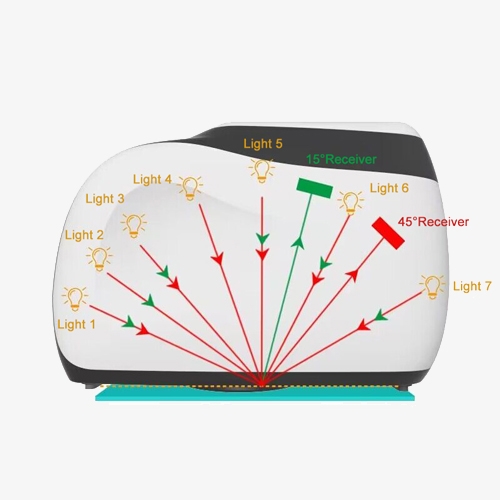
Multi angle measurement
- 12mm measuring caliber.
- 7 light sources and 2 receivers, this portable spectrophotometer can measure 12 angles simultaneously.
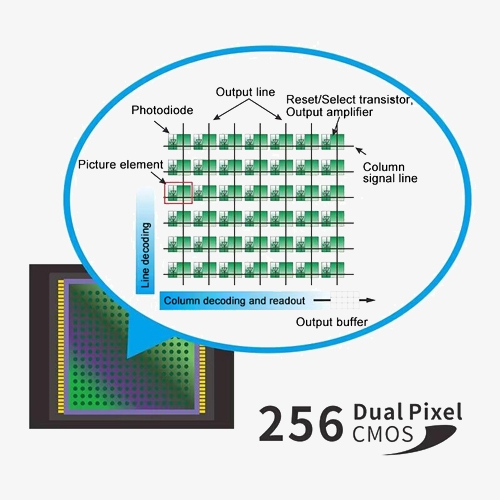
256-pixel dual-array CMOS image sensor
- Higher optical resolution ensures faster measurement speed, accuracy, stability, and consistency of the 12mm spectrophotometer.
- Mastering core technology, sharing the same platform with international standards, achieving full compatibility.
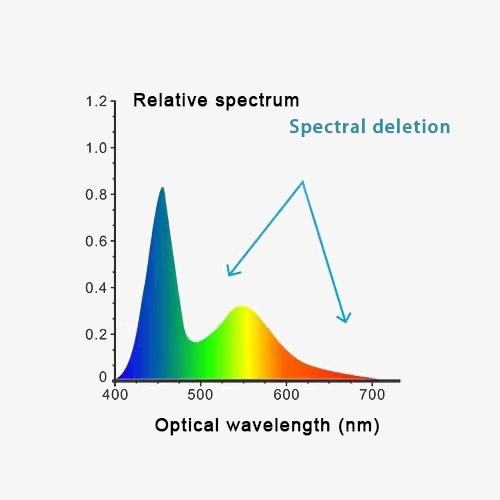
Full-spectrum balanced LED and ultraviolet (UV) light source
- Utilizing full-spectrum balanced LED light source and ultraviolet (UV) light source for accurate measurement of fluorescent whitening agents.
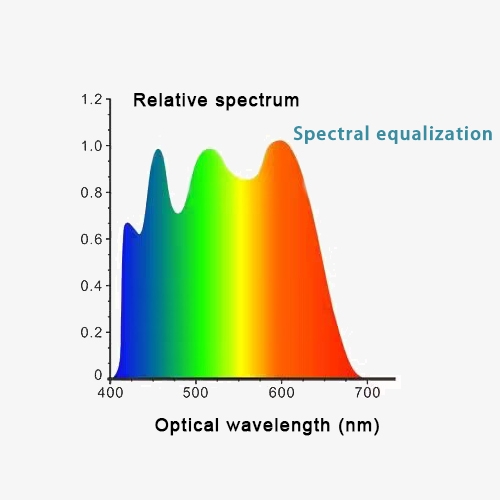
Full-spectrum balanced LED light source and UV light source as illumination
- The 20mm portable spectrophotometer employs full-spectrum balanced LED light source and UV light source as illumination, ensuring abundant spectral distribution in both visible and ultraviolet ranges.
- Accurately measuring materials containing fluorescent whitening agents such as traffic signs, plastics, textiles, and paper, among others.
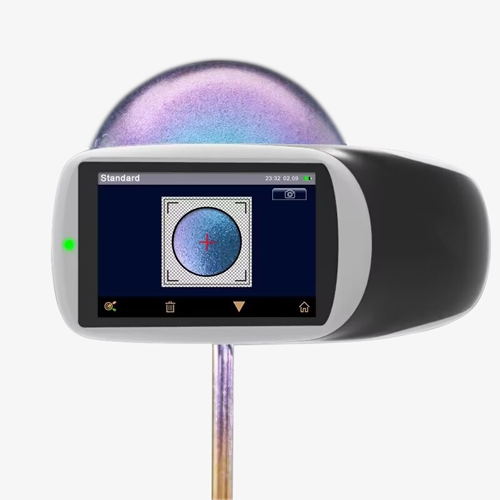
Color camera preview
- Built-in color camera positioning, can accurately judge the objectmeasured position, and improve the measurement efficiency andaccuracy of multi-angle portable colorimeter.
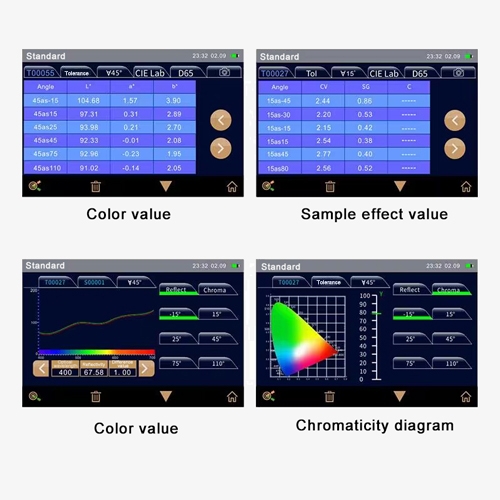
Easily analyze data
- The screen can intuitively display the spectrum chart/data,sample chromaticity value, color difference value/graph, pass/failresult,color simulation, color deviation, sample effect value.
Application
The colorimeter can easily achieve accurate color transmission and can also be used as precision color testing equipment. It is widely used in plastic, electronics, paint, ink, textile and garment, printing and dyeing, printing paper, automotive, medical, cosmetic and food industries, research institutes, schools and laboratories.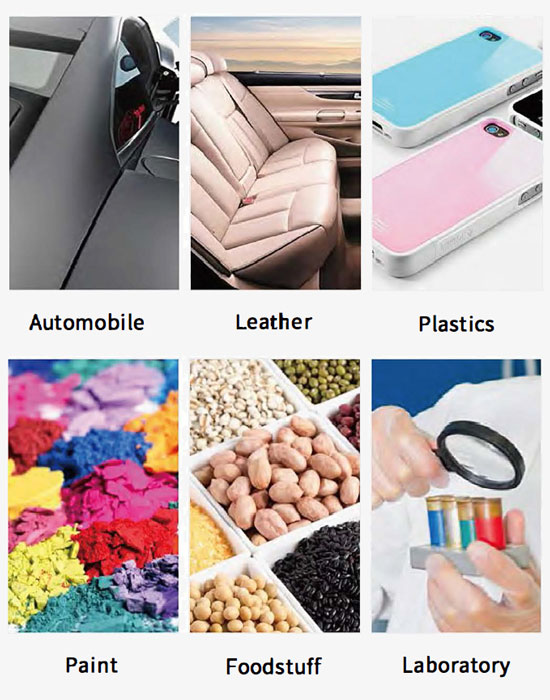
| Model | SISCO-CM-MS3012 |
| Measurement Geometry | 12 measurement angles (7 light sources, 2 receivers) |
| Professional Guarantee | Compliant with ASTM D 2244, E308, E1164, E2194, E2539, DIN 5033, 5036, 6174, 6175-1, 6175-2, IS0 7724, 11664-4, SAE J 1545 standards |
| Color Measurement Angles | 45° receiver: 45as-15°, 45as15°, 45as25°, 45as45°, 45as75°, 45as110°; 15° receiver: 15as-45°, 15as-15°, 15as15°, 15as-30°, 15as45°, 15as80° |
| Features | Precise and consistent color measurement for metallic, pearlescent, and other complex special effect color products |
| Illumination Light Source and Lifespan Measurements | Blue light enhanced full spectrum LED with over 3 million measurements over 5 years |
| Spectral Method | Concave grating |
| Detector | 256-pixel dual-array CMOS image sensor |
| Wavelength Range and Interval | 400-700nm, 10nm intervals |
| Measurement Range | 0-600% |
| Bandwidth | 10nm |
| Measurement Caliber | Ф12mm |
| Color Spaces | CIE LAB, XYZ, Yxy, LCh, βxy, DIN Lab99 |
| Other Colorimetric Indices | Flop Index, Radiant Intensity Value |
| Observer Angles | 2°/10° |
| Observation Light Sources | D65, A, C, D50, D55, D75, F1, F2 (CWF), F3, F4, F5, F6, F7 (DLF), F8, F9, F10 (TPL5), F11 (TL84), F12 (TL83/U30) |
| Display | Spectral chart/data, sample chromaticity value, color difference value/graph, pass/fail results, color simulation, sample effect value, effect difference |
| Measurement Time | Single angle measurement time: 1s All angles measurement: 12s |
| Color Reproducibility | Spectral reflectance: within 0.08% standard deviation; Colorimetric value: 0.02ΔE*ab (after instrument warm-up calibration, average of 30 measurements of white tile at 5-second intervals) |
| Color Repeatability | ΔE*<0.10, average on gray BCRA color chart; ΔE*<0.25, average on colored BCRA color chart |
| Effect Parameters | Sparkle, Goniochromatism, Granularity |
| Effect Repeatability | Short-term repeatability of sparkle: 0.12% (10 standard deviations) (after instrument warm-up calibration, average of 10 measurements of colored tile at 10-second intervals); Short-term repeatability of granularity: 0.09% (10 standard deviations) (after instrument warm-up calibration, average of 10 measurements of colored tile at 10-second intervals) |
| Effect Reproducibility | Reproducibility of sparkle: 1.9% (10 standard deviations) (average measurement on BCRA series II 12 color chart); Reproducibility of granularity: 1.4% (10 standard deviations) (average measurement on BCRA series II 12 color chart) |
| Trigger Mode | Pressure-sensitive trigger, button trigger, software trigger |
| Measurement Modes | Single measurement, average measurement (1-99 times), continuous measurement (1-99 times) |
| Positioning Method | Color camera preview |
| Battery Capacity | 3.7V lithium battery, 3200mAh, can continuously test 6000 times within 8 hours of full charge |
| Display Screen | TFT true color 3.5-inch, capacitive touchscreen |
| Interfaces | USB, bluetooth |
| Data Storage | 1000 standard samples, 4000 test samples |
| Calibration | Built-in white tile parameters, external white tile, black light trap, color chart |
| Accessories | Power adapter, data cable, manual, calibration box, black light trap, protective cover, wrist strap |
Q1: How does a colorimeter work?
A1: Colorimeters rely on the concept of the Beer-Lambert law, which assumes that the absorbance of a substance is proportional to its concentration. For example, the higher the concentration of a solution, the higher the absorbance reading. Many chemical and biological experiments are based on this concept. To obtain a Beer's law curve, several standards (solutions of known concentration) are prepared and their absorbance values are determined using a colorimeter.
Q2: What is colorimetry?
A2: A colorimeter is a device that measures light absorbance (how much light is absorbed) and light transmission (how much light passes through) in a liquid by analyzing the intensity of the color.
Q3: What are the limitations of a colorimeter?
A3: One limitation of chemical colorimeters is that differences in certain substances may lead to inaccurate test results. According to Global Water Instrumentation, because these differences are different for each substance, a chemical colorimeter alone is not a completely foolproof testing device.
Tips: Portable spectrophotometer working principle
Light Source: The instrument starts by emitting a beam of light. This light source can be a broad-spectrum white light LED or a specific wavelength source depending on the design.
Sample Interaction: The light from the source is then directed towards the sample placed within the measurement area. As the light interacts with the sample, different things can happen:
Absorption: Certain molecules within the sample may absorb specific wavelengths of light due to their electronic structure. This absorption removes that particular wavelength from the light beam.
Transmission: The remaining wavelengths that aren't absorbed will pass through the sample.
Wavelength Separation: The transmitted light (or reflected light in some models) is then directed through a diffraction grating or a prism. This component acts like a rainbow maker, separating the light into its individual wavelengths.
Detection: A detector array positioned behind the grating/prism measures the intensity of each separated wavelength. This essentially creates a digital fingerprint of how much light was absorbed or transmitted at each wavelength.
Data Analysis: The instrument's internal software analyzes the detector data. By comparing the intensity of the original light source with the intensity after interacting with the sample, the software can determine the absorption or reflectance spectrum of the sample.
The core principle of colorimeter revolves around analyzing the changes in the light caused by the sample. By measuring the missing or reduced intensity at specific wavelengths (absorption) or the remaining transmitted / reflected light intensity across the spectrum, the instrument reveals information about the sample's composition or properties.
Thank you for buying industrial test and measurement equipment on SISCO.com, all products sold by SISCO and the partner cover a 12 months warranty, effective from the date of receiving the products.
What is covered?
SISCO is responsible for providing free spare parts, and free technical support to assist the customer to repair the defective products until the problem is solved.
What is not covered?
- Product purchased from anyone other than a SISCO store or a SISCO authorized reseller.
- Expendable parts.
- Routine cleaning or normal cosmetic and mechanical wear.
- Damage from misuse, abuse or neglect.
- Damage from use of parts other than SISCO approved.
- Damage from use outside the product’s usage or storage parameters.
- Damage from use of parts not sold by SISCO.
- Damage from modification or incorporation into other products.
- Damage from repair or replacement of warranted parts by a service provider other than a SISCO authorized service provider.
- Damage caused by the application environment not meeting the product usage requirements and the failure to perform preventive maintenance.

